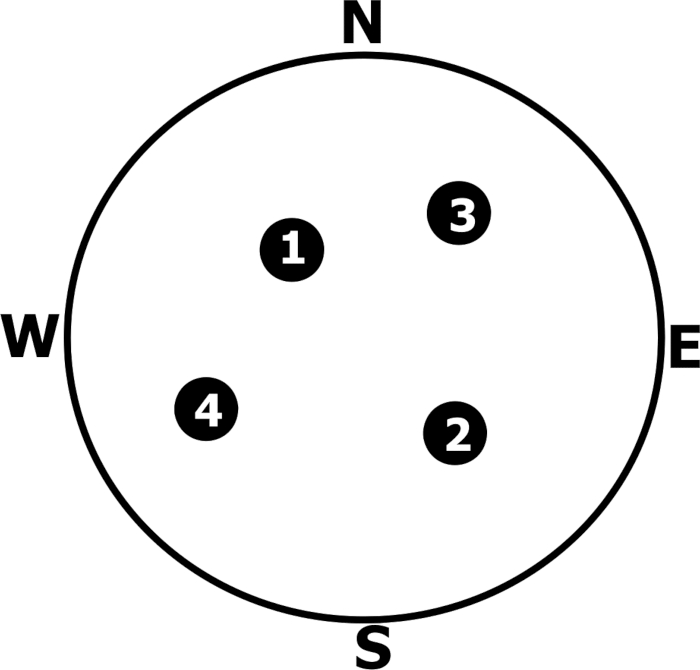The Water Maze with Platform Relocation: A Method to Assess Working Memory
Abstract
Source: Hausser, N., et al. Detecting Behavioral Deficits in Rats After Traumatic Brain Injury. J. Vis. Exp (2018).
In this video, we describe the Morris water maze test with platform relocation, a navigational task used to study working memory in rodents.
Protocol
All procedures involving animal models have been reviewed by the local institutional animal care committee and the JoVE veterinary review board.
1. Working Memory Water Maze
- Equipment
- Use a tank filled with water to a height of 28 cm and maintained at 26 ± 1 °C.
- Use a clear acrylic glass platform that is 10 cm in diameter on a stand 26 cm in height.
NOTE: The top surface of the platform should be coated with silicon in the shape of a circle with an X across it. This allows the rats to climb up onto the platform and gives them traction so they do not slip off. - Gather a stopwatch, a heat lamp, disposable towels, absorbent pads, extra cages, and a small, long-handled aquarium fish net. Use a computerized video tracking system that is connected to a video camera to record the rat swimming and send the data to the computer. Save the video and data on the computer for later analysis.
- Working Memory Water Maze Testing
- Give the rats four pairs of trials each day for five consecutive days, place the platform in each of the four quadrants and start the rats from each of the four starting points (N, S, E, W) as described below.
- First, define the starting location-platform pairs to be used throughout the experiment.
NOTE: The order of the quadrants where the platform is located and the starting point used needs to be in a different order for each of the five days of swimming, but the same for each rat.- Use four starting points (N, S, E, or W) and four platform locations (Quadrants 1, 2, 3, or 4; Figure 1). For example, (N, 2; E, 4; S, 1; W, 3; see Figure 1). Plan a balanced order (not random) to avoid starting points too close to the platforms (No starting point is the same quadrant as the platform location). Set up a data sheet using the platform quadrants and four starting points.
- Write a protocol for the video tracking software to use in order to video the rats swimming and to collect specified data (e.g., duration of swim, speed, distance traveled before finding the platform).
NOTE: The tracking software will automatically stop recording after the specified duration. The protocol should allow for specifying where the platform is placed, how many trials to run per animal, and how many animals will be tested per session, and also the maximum duration allowed (e.g., 120 s). - Test 4–6 rats per session.
NOTE: More than 6 rats create an issue in the timing between rats and can lead to error by the handler. The warming boxes also become crowded.
- Trial 1
- Open the video tracking software and load the correct protocol including the water maze map.
- Place the platform in the assigned location (e.g., 2; Figure 1) and check that it matches the map in the software. Prepare the tracking software to start when the rat enters the field of view of the video camera.
- Place the rat in the tank facing the wall at the assigned location (e.g., N; Figure 1) and immediately start the timer.
- Allow the rat 120 s to find the platform. When the rat finds the platform, stop the timer and record the time on the worksheet. If the rat fails to find the platform, lead it to the platform by hand and record 120 s. Allow the rat 15 s to remain on the platform.
- Trial 2
- Check that the software is ready for Trial 2. Place the rat back in the tank at the same starting position (N). Repeat step 1.2.3.4.
- After Trial 2, place the rat in the heated enclosure for 4 min. Move the platform to the second location (4; Figure 1), and check that it matches the map in the software.
- Repeat Trial 1 and 2 procedures (steps 1.2.3–1.2.4) until all four starting location/platform pairings are completed.
Representative Results

Figure 1. Diagram of the water maze. This diagram demonstrates the possible platform locations (1, 2, 3, 4) and starting points (N, S, E, W) for the working memory Morris water maze. Rats are allowed two trials from each starting location/platform pairing. There is a 15 s inter-trial interval and 4 min rest in a warming chamber between pairs of trials for a total of four pairs of trials for each daily session.
Disclosures
The authors have nothing to disclose.
Materials
| Sprague-Dawley rats | Charles Rivers Laboratories | CD-IGS rats strain code 001 | Male albino 300-350g at arrival |
| Fiberglass pool | Manufacturer unknown | 72" diameter x 30" deep (~ 500 gal) | |
| Plexiglass platform | Hand-made by Maggie Parsley | 10 cm diameter 26" tall with silicone applied to the surface of the platform to provide a gripping surface | |
| Plexiglass animal boxes w/ lids | UTMB Machine Shop | 2 boxes 10" w x 16" L x 9" h | |
| Spot lights/heat lamps | Home Depot | 3 around pool 2 over boxes to dry animals | |
| AnyMaze | San Diego Instruments | 9001 | http://www.sandiegoinstruments.com/any-maze-video-tracking/ |

